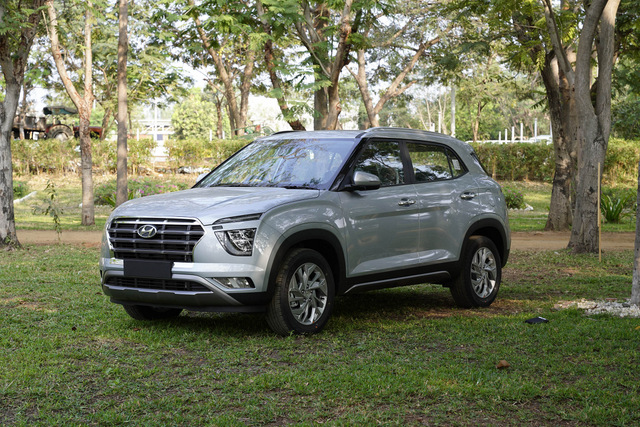
The Hyundai Creta has been the undisputed leader of the compact SUV space since its launch, and with the arrival of the new Creta, the Korean carmaker hopes for a similar success story this time around as well. So what are the significant elements that Hyundai have included in the new Creta to ensure that it too end up at the top of the compact SUV pile?
- Styling From the Future – The 2020 Creta follows Hyundai’s latest Sensuous Sportiness design philosophy and the result is a contemporary design that works rather well with its SUV leanings. The cascading grille and curved three-part DRL design are big highlights, although the new-age approach to placing the headlamps a little lower than they are on traditional car designs has proved to be decisive. The 17″ diamond-cut alloy wheels are swanky, and the contrast panel running from the C pillar and along the roof to the front adds an extra element of style. The LED set up at the rear matches to the lighting fixtures up front, and the sporty spoiler rounds off the entire look of the Creta.
- Blue Link Connected Car Tech – The new Creta gets Hyundai’s proprietary Blue Link connected car suite which offers over 50 bespoke functions that can be remotely activated through an app or smartwatch and through in-car voice commands. You can remotely check on the health of the Creta, check air quality, toggle the climate control, track the vehicle’s moment and more. You can also use voice commands to control the vented seats, open and close the sunroof, and even ask for the latest cricket scores among other things.

- Creature Comforts – Hyundai has always brought in exciting features typically seen on segments higher up the rung into their models and the new Creta is no different. It gets seat ventilation, a tyre pressure monitoring system, an eight-speaker Bose sound system, wireless charging for your smartphones, second-row recline, rear window shades and ambient lighting too.
- Versatile Engine Options – The new Creta comes with one diesel and two petrol engine offerings. The diesel is a 1.5-litre U2 CRDi producing 115 hp and 250 Nm of torque. The 1.5-litre MPi petrol offers up 115 hp and 144 Nm of torque, and the more powerful 1.4-litre Turbo GDi churns out 140 hp and 242 Nm of twist.
- Transmission Selections – The new Creta also offers a few transmission options to pick from. There’s a six-speed manual that’s available with the 1.5 petrol and diesel options. The diesel also gets a six-speed torque converter automatic as an option. The 1.5-petrol gets an IVT (or CVT) as the auto gearbox option, and the 1.4 turbo-petrol comes mated to seven-speed DCT with paddle shifters.

- Off-road Capabilities – Hyundai are giving the Creta a bit more off-road cred with the introduction of driving modes. These traction-control based modes offer specific maps for different terrains that can be selected manually. Choose from Sand, Snow, and Mud modes depending on where your off-road excursions take you.
- Safety Focus – Safety is a crucial consideration for buyers all over the country, and Hyundai haven’t skimped in the safety department either. You get dual airbags and ABS with EBD as standard across the board. The top variants get six airbags and additional safety tech in the form of Electronic Stability Control (ESC), Vehicle Stability Management (VSM) and Hill Start Assist Control (HAC).

- A Variant for Everyone – With three engine and four transmission options you would expect the new Creta’s variant list to be extensive, and Hyundai do not disappoint on this score. There are five variants available with the 1.5-litre MPi engine, two with the 1.4 Kappa Turbo GDi Petrol, and a further seven options powered by the 1.5 U2 CRDi diesel. That’s a sum total of 14 variants to pick from.
- Competitive Pricing – The new Creta may be feature-rich but Hyundai have ensured that the pricing stays as pocket-friendly as possible. The SUV’s price list is well aligned to its competitors, starting at Rs 9.99 lakh for the entry-level 1.5 petrol variant, and extending to Rs 17.2 lakh for the top end DCT turbo-petrol and automatic diesel variants (all prices are ex-showroom). Here’s a variant-wise breakdown for your convenience.
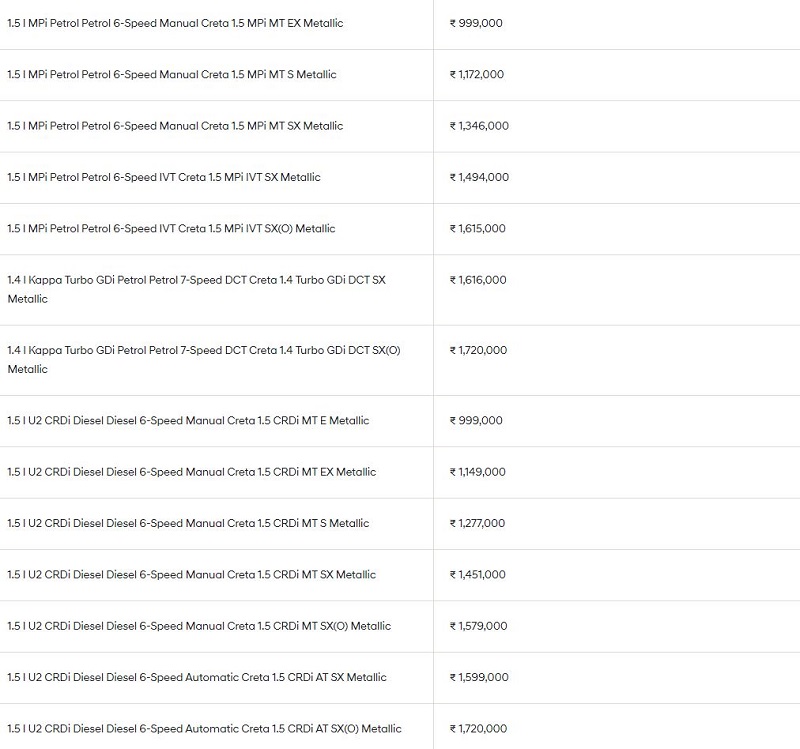


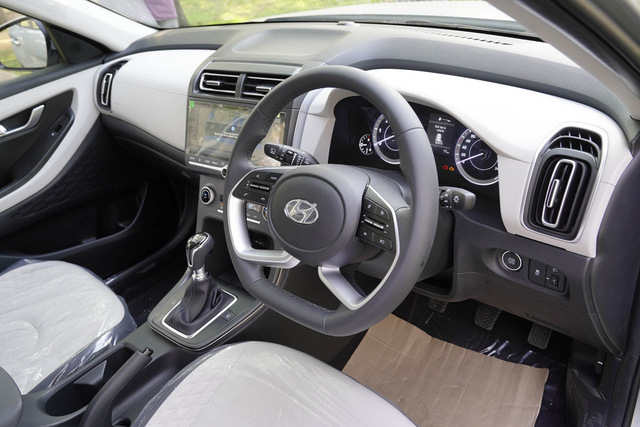
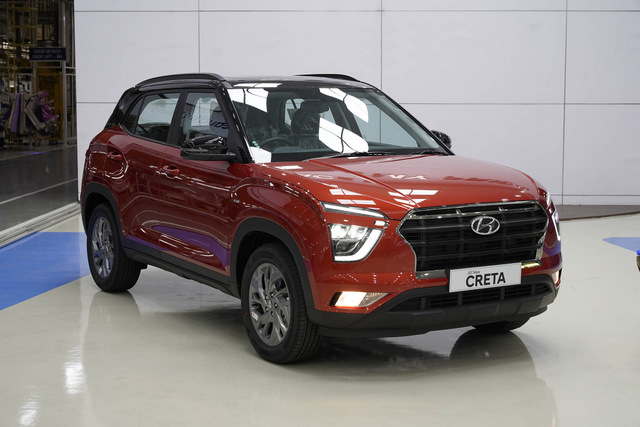
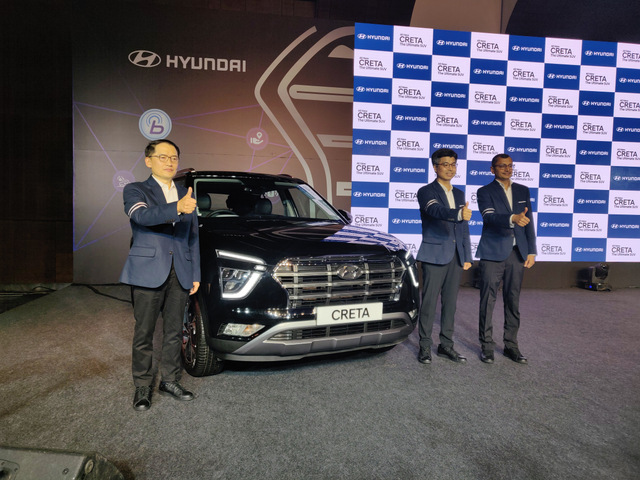



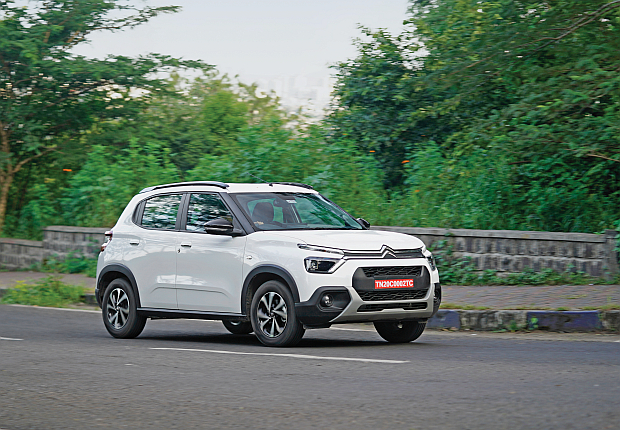
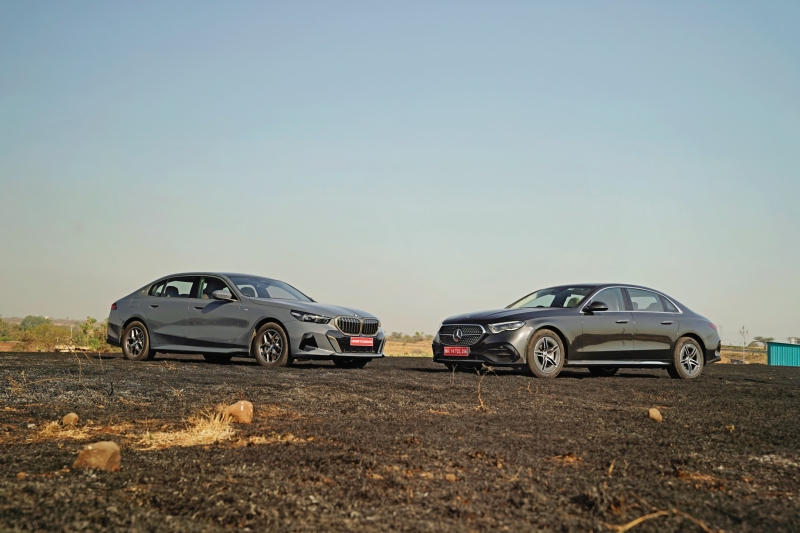

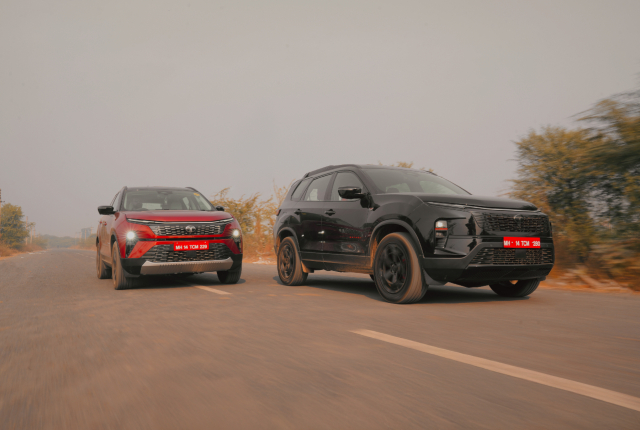









Leave a Reply